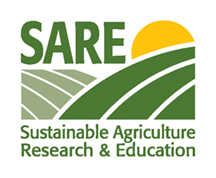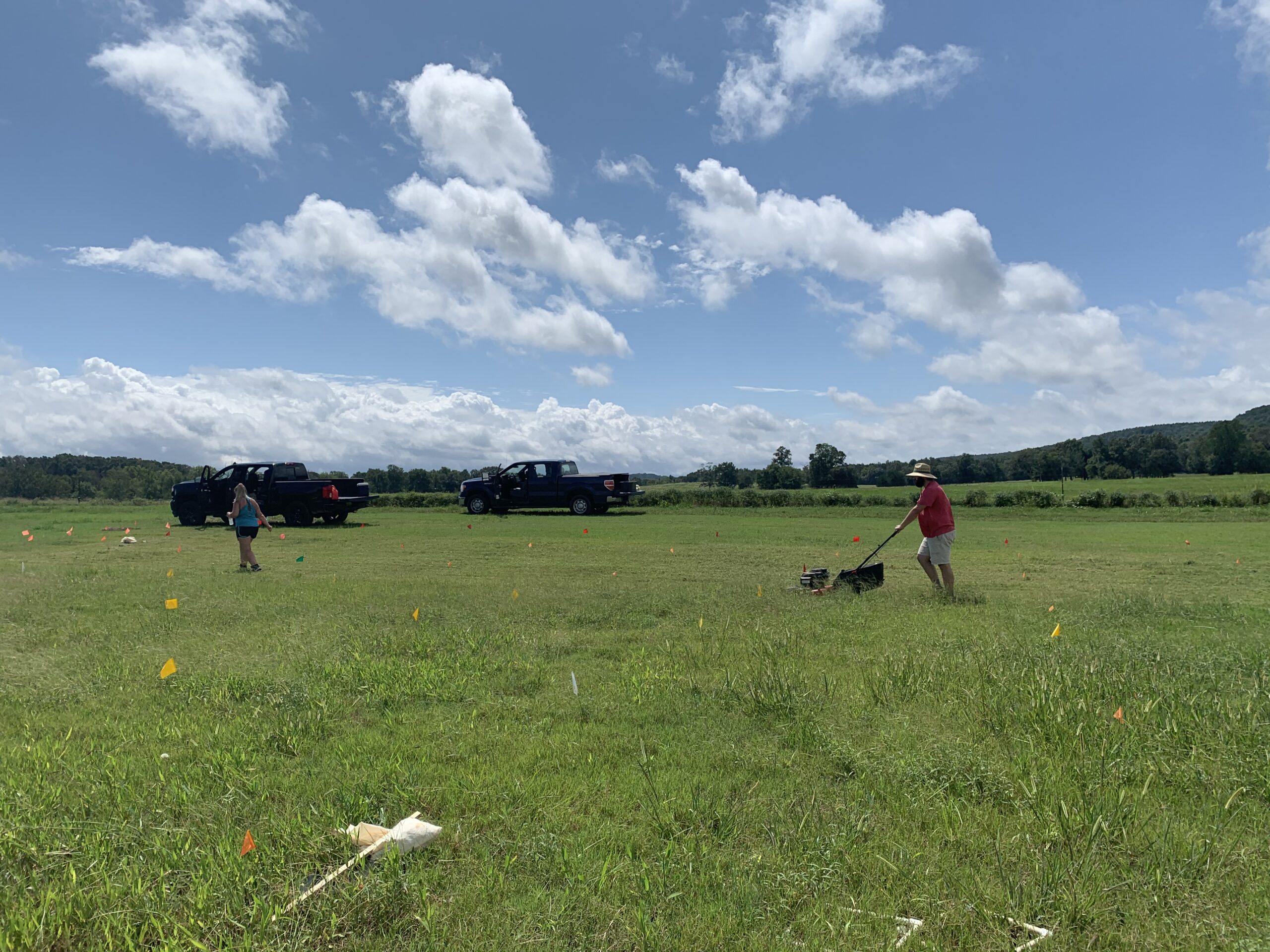
Plant Growth-Promoting Rhizobacteria technology for biofertilization of bermudagrass improves soil health and lowers input costs.
My job in Extension is to teach producers about third party research. Companies need to provide farmers with some objective analysis of their products before farmers invest in them. Economic viability is a challenge in the farming industry and sometimes small things, like buying biofertilizer, are a make or break situation for these farmers. ... In Alabama we have small-scale, homesteader and large-scale farmers who want to farm in a sustainable way, but they can be susceptible to false advertising. Our research shows them there’s a compromise—you still need some traditional synthetic inputs, but you can start moving toward more environmentally-based practices in terms of soil health.”
—Dr. Leanne Dillard, Research and Education Grantee
Equipping Farmers with Third-Party Research to Reduce Risky Investments
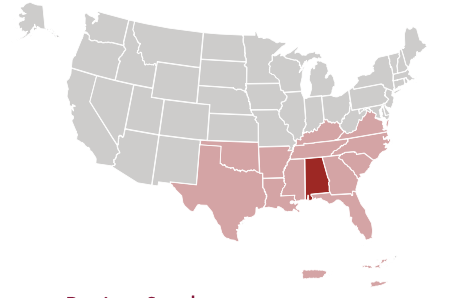
Region: Southern
State: Alabama
Grant Type: Research and Education
Grant: LS19-307
SARE POST-PROJECT EVALUATION IMPACT MODEL
This evaluation impact model is specific to this SARE-funded project.
Sustainability Impacts
The project grantees and stakeholders contributed to the following sustainability impacts:
- Environmental sustainability impacts
- Production efficiency impacts
Grantee Indicators
(Associate Professor)
Project grantees (defined above) achieved sustainability impacts by engaging with the following indicators through involvement with project activities:
- Increased knowledge/skills
- Increased capacity/motivation
- Increased engagement
- Career growth
Stakeholder Indicators
(Student Researchers, Farmers, Extension Professionals)
Project stakeholders (defined above) achieved sustainability impacts by engaging with the following indicators through involvement with project activities:
- Increased knowledge/skills
- Increased capacity/motivation
- Career growth
The Success Story
Forages like bermudagrass are used widely throughout the Southeastern U.S. for hay production and livestock grazing, making up a critical component of the cattle industry. Bermudagrass is an extremely drought-resistant, persistent warm-season perennial highly responsive to nitrogen inputs to increase biomass. Nitrogen fertilizer is one of the biggest input costs for farmers and can negatively impact soil, water, and air resources. However, investing financial resources in growing good pasture, using methods that are better for the ecosystem and produce more nutritious feed, can be a big ask for farmers who are already managing the complexities and costs of their livestock. In the long-term, affordable and environmentally sound ways to promote forage growth are essential to the viability of the livestock industry. In response to this need, Dr. Leanne Dillard, Associate Professor and Extension Specialist, and her colleagues at Auburn University in Alabama, Dr. Russel Muntfering, Professor, and Dr. David Held, Professor and Department Chair, utilized a SARE Research and Education grant (LS19-307) to develop farmer-friendly, research- based solutions by applying Plant Growth Promoting Rhizobacteria (PGPR) technology to forages. Drawing on her extension expertise and farmer networks, the SARE funding further provided Dr. Dillard with opportunities to educate farmers about the benefits of PGPR technology. The education piece is critical to Dr. Dillard’s work as there is a sector of the booming biofertilizer market that is not research- based, and that can be misleading for farmers. SARE-funded study results indicated that using PGPR reduces nitrogen inputs by 50% while producing the same forage quality and yield. Her most recent success included working with a company expressing interest in commercializing the patented PGPR product for forages, which will make this technology commercially available to farmers.
Helping Farmers Make Informed Decisions and Navigate the Biofertilizer Market
It’s the Wild Wild West out there in terms of the number of bio stimulants and bacterial products marketed as fertilizers. From the extension side, the SARE grant gave me an outlet to educate producers about that market. Right now, we’re not commercialized so I’m not able to promote our PGPR product, but I let producers know this type of technology is being developed. And I say to farmers, you need to be skeptical. When someone’s telling you, you can put on a gallon of something per acre and it’s going to increase your growth and you don’t need any synthetic nitrogen, that’s probably snake oil and not something that’s sustainable. A lot of my education efforts are focused on this new biofertilization sector of the market that’s exploding but isn’t research based.”
—Dr. Leanne Dillard, Research and Education Grantee
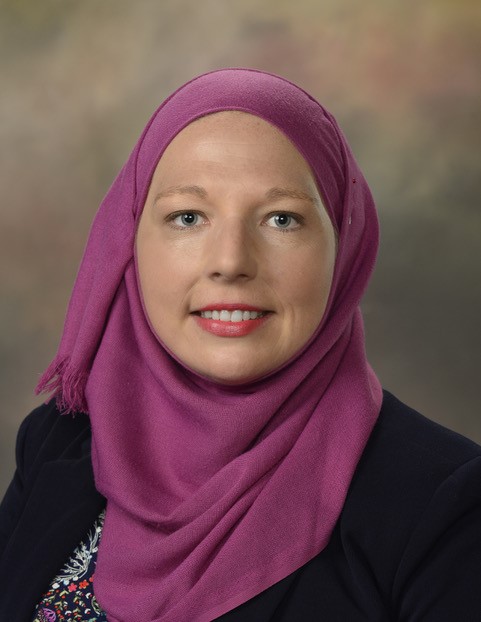
Grantee (Associate Professor) Highlights
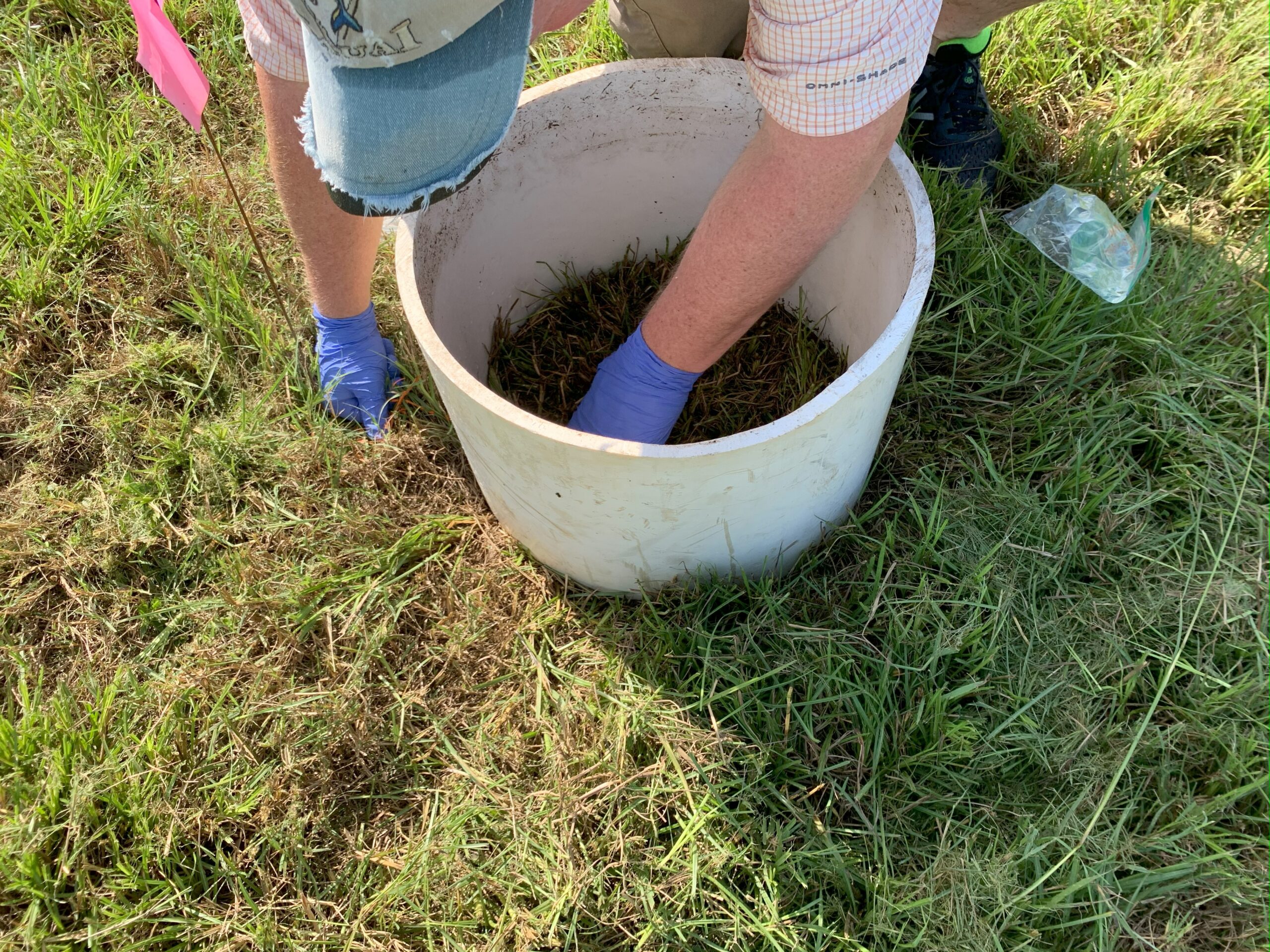
PGPR was first developed and coined by Auburn University several decades ago, but until recently it was primarily utilized for horticulture and row crops. Dr. Dillard began experimenting with PGPR technology and bermudagrass to introduce bacteria that would stimulate growth in forages and create a digestible and nutritious feed product for livestock. With SARE funding, she built on these preliminary findings to conduct innovative PGPR research on a field scale, working on- farm with varied bermudagrass producers and beef cattle producers that represent diverse locations across Alabama. During the grant term, Dr. Dillard provided in-service training for 80 animal science and forage extension professionals from eight states and disseminated research findings as a keynote speaker at the Southern Pasture and Forage Crop Improvement Conference. Her research findings were featured in academic publications, peer-reviewed articles by Alabama Cooperative Extension System, and the popular press, including an article by Progressive Forage, a national publishing organization that creates content aimed at dairy, beef, and forage producers. After the grant term, Dr. Dillard continued to share research findings at an international PGPR conference in France to demonstrate the application of PGPR technology to grasslands. As one of the only agronomists present in a group of microbiologists, she showcased the new market potential for PGPR practices and highlighted the importance of producer involvement in research. Dr. Dillard is passionate about her ongoing partnerships with farmers to help them find cost-effective solutions and she is interested in further research to understand how PGPR may positively impact the ruminant microbiome, reduce methane production, and increase nutrition for cattle.
SARE has been a formative part of Dr. Dillard’s career path. She first engaged with SARE as a post doctorate researcher in Pennsylvania, where she helped implement a Northeast SARE Research and Education grant (LNE16-352) looking at alternative forages for dairy systems. After relocating to Auburn University and receiving her first Southern SARE Research and Education grant, Dr. Dillard ramped up her capacity to secure grants and apply research learnings; in the last four years, she won a NIFA Agriculture and Food Research Initiative grant to continue her PGPR research, and expanded her efforts to include cool season grasses grown primarily on the East Coast. She also secured four additional SARE grants in partnership with multiple universities in the Southern region. In collaboration with Alabama Cooperative Extension System, Clemson University, the University of Georgia, the University of Florida, and North Carolina State University, she utilized PDP grant funding (SPDP21-04) to develop a forage establishment and management curriculum for extension agents and mentor farmers. She continues to use the handbook developed during this grant as a resource in her extension work with farmers today. Currently, Dr. Dillard is Co-Principal Investigator for another PDP grant (SPDP23-018), in partnership with Tuskegee University, establishing sites to showcase methods for forage production and value-added calves for socially and economically disadvantaged producers. With the University of Florida, she is managing a Research and Education grant (LS23-383) to provide Southeastern producers with science-based recommendations on utilizing diversified cover crops in their rotation systems. Lastly, with the University of Georgia (LS23-385), Dr. Dillard is contributing to a study focused on reducing methane in livestock production using plant secondary metabolites to achieve environmentally and economically sustainable beef production. Dr. Dillard places high value on the SARE program as, unlike other grants that are focused solely on research, these grants allow her to combine her expertise in producer engagement and scientific research.
SARE is an Ideal Grant Program for Extension Specialists to do Research and Reach Producers
SARE is an amazing program because it really is an integrated research and education grant. With many other USDA grants, it’s more difficult sometimes to integrate them and you almost feel they’re two different programs under the same umbrella. But SARE brings it together. ... For Extension specialists like me, who are 75% extension, 25% research, I don’t need multimillion-dollar research grants; I need to focus on producers. SARE is obviously the bread and butter of my program because I keep applying.”
—Dr. Leanne Dillard, Research and Education Grantee
Other Stakeholder (Student Researcher, Farmers, Extension Professionals) Highlights
Dr. Dillard’s research team included student researcher Kayla Sullins, who successfully processed a large number of samples from the six farmer sites. Sullins went on to write multiple published articles and is now working on her PhD at Auburn University, specializing in PGPR in peanuts and plant disease. The six partner farmers involved in the project gained knowledge about the use of nitrogen fertilizers and PGPR technology and expressed interest in buying PGPR products once they are commercially available. Dr. Dillard’s outreach activities equipped producers and extension agents with an understanding of proper nitrogen fertility and the knowledge needed to make informed decisions when navigating the biofertilizer market.
Focusing on Yield and Quality of Forages for Nutritious Livestock Feed
There is some quality aspect but one of the big differences between forages compared to other commodities like cotton, peanuts or corn, is that it’s really about yield potential. With forages it is a balance because you’re looking more at the plant itself, not necessarily its fruit. As you increase growth, a lot of times you put indigestible fiber into the plant, which is actually counterintuitive. It’s like saying I’m going to promote growth, but as a result a lot of is going to be indigestible when the animals consume it and they just defecate it out. It’s a catch 22 of trying to promote growth, but in a fashion that still increases digestibility and sustainability.”
—Dr. Leanne Dillard, Research and Education Grantee
Sustainability Impacts
Dr. Dillard’s research and producer outreach addresses farmers’ desire for production efficiency and decreased input costs. Her innovative use of PGPR technology successfully scales down the application of costly nitrogen fertilizers while also moving the needle on environmental sustainability of soil health. Dr. Dillard explained the findings as “the best of both worlds” given lowered costs for farmers and better options for the environment without sacrificing forage yield and quality. When this research is applied at scale its impacts will be notable, given that forages comprise the second largest land use in Alabama behind timber, and in the USA, forages and rangeland represent the largest land use. Throughout her SARE projects, Dr. Dillard remained responsive to production issues raised by farmers. For example, when partner farmers expressed concern that using PGPR would require additional labor (another pass over the field after applying herbicides), Dr. Dillard resolved the issue by mixing PGPR and herbicides in the same tank with the same effect. Her work also responds to consumer demands for more sustainably produced products.
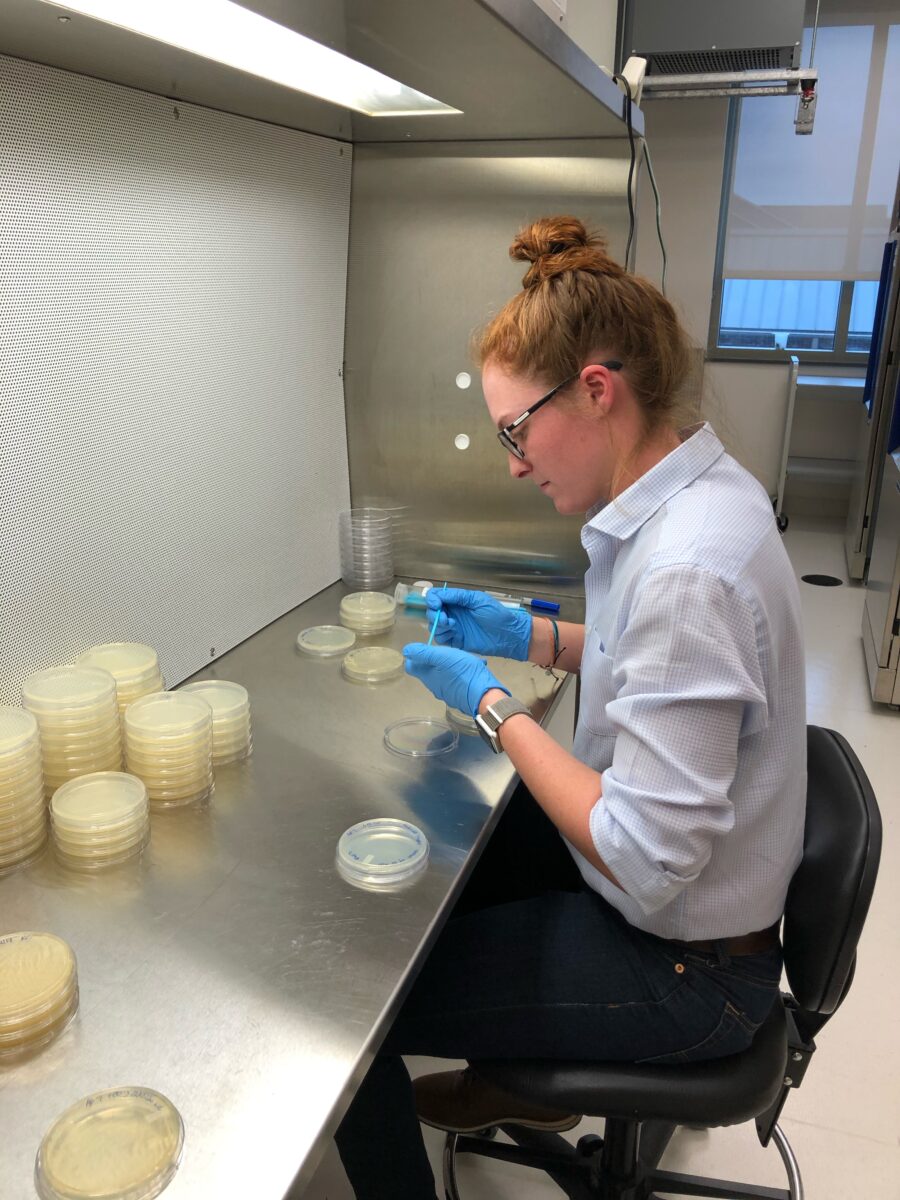
Barriers
COVID-19 pandemic disruptions initially limited Dr. Dillard’s ability to meet in person with farmers. As a workaround, her research team developed a forage basics course curriculum that covers bermudagrass management and fertility; a free online tool accessed by more than 300 individuals. The course teaches farmers to optimize growth through precision nitrogen fertilizer management (i.e., applying nitrogen at appropriate phases of plant growth and in ways that reduce harm to the ecosystem). Dr. Dillard continues to promote this course with both beginning and experienced farmers eager to learn about current best practices.
